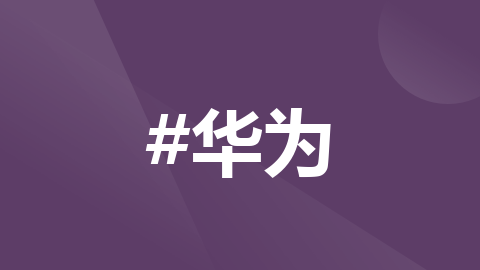ios view添加上边框_iOS开发之如何给View添加指定位置的边框线详解
开发的项目多种多样,有时候程序员也会遇到瓶颈不知如何往下操作,今天爱站技术频道小编为大家编写了iOS开发之如何给View添加指定位置的边框线详解,希望对大家有所帮助!示例代码封装一:直接封装成了一个方法/// 边框类型(位移枚举)typedef NS_ENUM(NSInteger, UIBorderSideType) {UIBorderSideTypeAll = 0,UIBorderSideTyp
开发的项目多种多样,有时候程序员也会遇到瓶颈不知如何往下操作,今天爱站技术频道小编为大家编写了iOS开发之如何给View添加指定位置的边框线详解,希望对大家有所帮助!
示例代码
封装一:直接封装成了一个方法
/// 边框类型(位移枚举)
typedef NS_ENUM(NSInteger, UIBorderSideType) {
UIBorderSideTypeAll = 0,
UIBorderSideTypeTop = 1 << 0,
UIBorderSideTypeBottom = 1 << 1,
UIBorderSideTypeLeft = 1 << 2,
UIBorderSideTypeRight = 1 << 3,
};
/**
设置view指定位置的边框
@param originalView 原view
@param color 边框颜色
@param borderWidth 边框宽度
@param borderType 边框类型 例子: UIBorderSideTypeTop|UIBorderSideTypeBottom
@return view
*/
- (UIView *)borderForView:(UIView *)originalView color:(UIColor *)color borderWidth:(CGFloat)borderWidth borderType:(UIBorderSideType)borderType {
if (borderType == UIBorderSideTypeAll) {
originalView.layer.borderWidth = borderWidth;
originalView.layer.borderColor = color.CGColor;
return originalView;
}
/// 线的路径
UIBezierPath * bezierPath = [UIBezierPath bezierPath];
/// 左侧
if (borderType & UIBorderSideTypeLeft) {
/// 左侧线路径
[bezierPath moveToPoint:CGPointMake(0.0f, originalView.frame.size.height)];
[bezierPath addLineToPoint:CGPointMake(0.0f, 0.0f)];
}
/// 右侧
if (borderType & UIBorderSideTypeRight) {
/// 右侧线路径
[bezierPath moveToPoint:CGPointMake(originalView.frame.size.width, 0.0f)];
[bezierPath addLineToPoint:CGPointMake( originalView.frame.size.width, originalView.frame.size.height)];
}
/// top
if (borderType & UIBorderSideTypeTop) {
/// top线路径
[bezierPath moveToPoint:CGPointMake(0.0f, 0.0f)];
[bezierPath addLineToPoint:CGPointMake(originalView.frame.size.width, 0.0f)];
}
/// bottom
if (borderType & UIBorderSideTypeBottom) {
/// bottom线路径
[bezierPath moveToPoint:CGPointMake(0.0f, originalView.frame.size.height)];
[bezierPath addLineToPoint:CGPointMake( originalView.frame.size.width, originalView.frame.size.height)];
}
CAShapeLayer * shapeLayer = [CAShapeLayer layer];
shapeLayer.strokeColor = color.CGColor;
shapeLayer.fillColor = [UIColor clearColor].CGColor;
/// 添加路径
shapeLayer.path = bezierPath.CGPath;
/// 线宽度
shapeLayer.lineWidth = borderWidth;
[originalView.layer addSublayer:shapeLayer];
return originalView;
}
封装二:封装成了类别
.h内容
#import
typedef NS_OPTIONS(NSUInteger, UIBorderSideType) {
UIBorderSideTypeAll = 0,
UIBorderSideTypeTop = 1 << 0,
UIBorderSideTypeBottom = 1 << 1,
UIBorderSideTypeLeft = 1 << 2,
UIBorderSideTypeRight = 1 << 3,
};
@interface UIView (BorderLine)
- (UIView *)borderForColor:(UIColor *)color borderWidth:(CGFloat)borderWidth borderType:(UIBorderSideType)borderType;
@end
.m内容
#import "UIView+BorderLine.h"
@implementation UIView (BorderLine)
- (UIView *)borderForColor:(UIColor *)color borderWidth:(CGFloat)borderWidth borderType:(UIBorderSideType)borderType {
if (borderType == UIBorderSideTypeAll) {
self.layer.borderWidth = borderWidth;
self.layer.borderColor = color.CGColor;
return self;
}
/// 左侧
if (borderType & UIBorderSideTypeLeft) {
/// 左侧线路径
[self.layer addSublayer:[self addLineOriginPoint:CGPointMake(0.f, 0.f) toPoint:CGPointMake(0.0f, self.frame.size.height) color:color borderWidth:borderWidth]];
}
/// 右侧
if (borderType & UIBorderSideTypeRight) {
/// 右侧线路径
[self.layer addSublayer:[self addLineOriginPoint:CGPointMake(self.frame.size.width, 0.0f) toPoint:CGPointMake( self.frame.size.width, self.frame.size.height) color:color borderWidth:borderWidth]];
}
/// top
if (borderType & UIBorderSideTypeTop) {
/// top线路径
[self.layer addSublayer:[self addLineOriginPoint:CGPointMake(0.0f, 0.0f) toPoint:CGPointMake(self.frame.size.width, 0.0f) color:color borderWidth:borderWidth]];
}
/// bottom
if (borderType & UIBorderSideTypeBottom) {
/// bottom线路径
[self.layer addSublayer:[self addLineOriginPoint:CGPointMake(0.0f, self.frame.size.height) toPoint:CGPointMake( self.frame.size.width, self.frame.size.height) color:color borderWidth:borderWidth]];
}
return self;
}
- (CAShapeLayer *)addLineOriginPoint:(CGPoint)p0 toPoint:(CGPoint)p1 color:(UIColor *)color borderWidth:(CGFloat)borderWidth {
/// 线的路径
UIBezierPath * bezierPath = [UIBezierPath bezierPath];
[bezierPath moveToPoint:p0];
[bezierPath addLineToPoint:p1];
CAShapeLayer * shapeLayer = [CAShapeLayer layer];
shapeLayer.strokeColor = color.CGColor;
shapeLayer.fillColor = [UIColor clearColor].CGColor;
/// 添加路径
shapeLayer.path = bezierPath.CGPath;
/// 线宽度
shapeLayer.lineWidth = borderWidth;
return shapeLayer;
}
@end
用法:
UIView *testView = [[UIView alloc] initWithFrame:CGRectMake(80.0f, 80.0f, 200.0f, 100.0f)];
testView.backgroundColor = [UIColor lightGrayColor];
[self.view addSubview:testView];
[self borderForView:testView color:[UIColor redColor] borderWidth:1.0f borderType:UIBorderSideTypeTop | UIBorderSideTypeBottom];
效果:
不足之处,边框线过宽的话,交界处会有留白;
ps:注意:需要先把你的view加载在父view上,[self.view addSubview:testView]; 之后再设置边框;否则可能会不起作用的;
以上就是爱站技术频道和大家分享的iOS开发之如何给View添加指定位置的边框线详解,小编为大家呈现了很多介绍,足以让我们这些读者去铭记哦。
更多推荐
 已为社区贡献3条内容
已为社区贡献3条内容









所有评论(0)